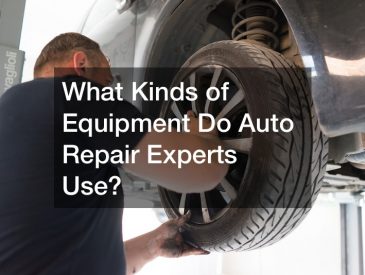
As a car owner, you’ve probably heard how quickly a car starts losing value after being taken off the lot. It’s true. This depreciation is inevitable, but there are things you can do to make the process slower. Here are ten smart tips to help you preserve your car’s value.
1. Keep It Dry

If you’ve ever taken your car to a drive-up washstand or an automatic car wash, you’ll notice you always find people hand-drying their cars. There’s a good reason for this. This seemingly pointless step is among the smart tips to preserve your car’s value.
While you can just let your car air dry and still get the benefits of deep cleaning, you won’t achieve that flawless shine unless you dry it as soon as you can following the wash. The main reason air drying isn’t recommended is due to the residue that’s left behind. Natural minerals are present in water, even in the water used to wash cars. These don’t evaporate during air drying.
The liquid will ultimately dissipate, but not before it has left behind stains, deposits, and streaks that’ll make your automobile look worse than before the wash. This is especially true if your vehicle features a dark paint finish or the sun shines, highlighting your car’s flaws. These deposits can damage some sections of your car’s paint job.
While you probably won’t notice damage after just one wash, a lifetime of letting your car air-dry will leave behind minerals and calcium that ruin your car’s surface. Some of the water compounds that are left behind can also erode the paint over time. When drying your car, ensure you use the right type of towel.
Use a chamois or microfiber cloth that’s paint safe to avoid damaging your car’s finish. Avoid using terry or bath cloth towels. You should also consider investing in the best waterproof cover for when you park your car outside. This is more of a preventive approach, which is how you need to think of your vehicle’s needs.
2. Avoid Bad Weather
You don’t have much control over the conditions you drive in. The weather can seriously damage your car, so you need to stay prepared. Different weather conditions will affect your car in different ways.
In the summer, everyone in the US experiences an increase in temperature. There are a few smart tips to remember when this happens. First, if you leave your automobile outside in the sun for an extended period, the high temperatures can cause it to get extremely hot. The hot roads also put your tires at risk of a blowout.
Even when the temperatures drop, the damage might still occur. The main problem people experience is their car failing to start or taking too many attempts. Your car is also obviously cold, so you should run it for some time before heading out to warm it up. Switch on the defroster as you warm up your car to melt ice that can affect your sight as you drive.
Cold temperatures typically come with snow, changing how you drive. For instance, slicker roads reduce the traction of your tires. Investing in winter tires is one of the most effective ways of improving your safety. These are much more capable of handling slippery driving conditions.
Always have a brush in your trunk since the snow will also cover your car. It’s important to note that the salt used to melt the snow on roads can cause corrosion. So it’s still important to regularly wash your car in the winter.
Another weather situation that might harm your automobile is hail. While hailstones average 1cm in diameter, they can be as huge as 10 to 15 cm. Therefore, hail can surely dent or fracture your windshield. Your best option is to seek refuge beneath a sturdy building, if possible.
You can also take a preventative approach and invest in hurricane proof windows. These are designed to break into fewer and dull pieces when compromised. It’ll also help if you avoid using your car in bad weather.
3. Don’t Park on the Street

Owning a car comes with a certain level of responsibility. You need to care for, protect, and maintain it to get the most service out of its useful life. As part of your smart tips for maintaining your car, never park your automobile on the street.
Even the most careful driver in the world can’t control the actions of other motorists. One inattentive driver, especially an uninsured one, is all it takes to put you on the hook for a high deductible or pricey repairs. Parking on the street close to your apartment exposes you to anyone trying to eat breakfast, applying makeup, or texting while driving.
The theft of expensive vehicles like BMWs is a common occurrence. According to industry experts, most auto thefts occur while cars are parked on the street or on private land. Parking your BMW on the street is the equivalent of tempting a dog with a bone. It’ll bite.
4. Look out for Debris
Although parking under huge overhanging tree branches or next to unstable trees puts your car in danger at any time, the stormy season is when tree-related car damage is most likely to occur. Extreme winds are known to fling shattered tree pieces at everything in their path, and falling branches and trees can seriously damage cars that are parked outdoors. Luckily, there are smart tips that can help you prevent trees from damaging your car, SUV, truck, or other vehicle during a storm.
Like always, better safe than sorry. Contact a tree trimming service for advice if you believe any trees on your property are weak or damaged. They’ll either assure you there’s no need for concern and the tree is firmly rooted or suggest limb trimming or removing a severely damaged tree. Regular trimming is a basic precaution against trees falling on your automobile during a severe storm, besides keeping trees healthy.
5. Only Drive When You Need To
When you look at the statistics, driving your car daily is downright dangerous. Car accidents are a leading contributor of fatalities in the US. According to zen life, an estimated 3,700 people die daily in fatal accidents.
Without knowing it, your daily commute to and from work, school, or your favorite country club is one of the most dangerous parts of your daily life. By reducing the number of times you take your car out on the road, you’re helping to reduce the number of potentially fatal auto accidents. Everyone is safer when fewer people are driving. Besides this, there are other advantages of only driving when necessary.
You put a lot of money into your car. With the increasing gas prices, you’ll be shelling out more money each month if you have to fill up your tank several times a week. By driving less, you’ll be able to save on gas, insurance, maintenance, and parking. Just imagine how much that will add up over time.
Driving less can relieve you of the burden of premature costly auto repairs. Car issues tend to strike at the worst possible times. which can cause you to dip into your savings to cover the unexpected fix. If you drive less, this won’t occur as frequently. The price of your insurance coverage is another consideration. Since many insurance providers give discounts to drivers who log low mileage, driving less might possibly result in significant savings.
6. Maintain Your Vehicle

You can’t make a list of smart tips to preserve your vehicle’s value and fail to include keeping up with maintenance. Like visiting the doctor for a checkup, most car owners often adopt the attitude of ‘If it ain’t broke, don’t fix it’ with their vehicle’s maintenance. This careless attitude toward preventative healthcare is bad for you, just as disregarding your car’s maintenance needs is bad.
When driving on a virtually empty road, a car breakdown is the last thing you want to encounter. When you’re not near a town or city, getting timely help is challenging. Anything can happen, such as your brakes failing, so take appropriate preventive measures to avoid finding yourself in such a situation. Regular maintenance involves inspections for issues like faulty batteries, broken hoses, or loose belts. Many components, including the power steering and air injection pump, cooling fan, and air conditioning compressor, depend on the belts for their operation. These systems won’t operate well if the belts are loose, which may cause additional issues.
7. Clean the Interior
Failing to clean your car’s interior will cause the surface to deteriorate more quickly than you anticipate. This is because spills, dust, and grime can damage your dashboard and interior surfaces like the upholstery. You must frequently clean the surfaces in your car’s interior using the proper cleaner for the various surfaces if you want to keep it in good condition for as long as possible. This’ll help minimize the rate of wear and tear.
Your car has several unique surfaces comprising different materials. The combination of carpet, leather, fabric, vinyl, and plastic work to make your car’s interior look attractive. However, stains of any size can make your automobile’s interior look unsightly. Regular car interior grooming by a cleaning service can help eliminate stains, preventing them from sticking to surfaces.
8. Drive Safely
You’ll spend less time in the repair shop when you adopt defensive driving techniques as part of your smart tips for maintaining your automobile’s value. It’s true. When you’re focused on the road and can anticipate road hazards, there’s a higher likelihood you’ll be able to spot pieces of debris or potholes that can damage your car.
Driving safely also means you’re less likely to get into a car crash. By maintaining a safe following distance and paying attention to your blindspots, you can avoid the most common accident, rear collisions. Being more aware of your surroundings makes avoiding risky drivers and automobile accidents much easier.
Attending a driving school offers benefits beyond helping you prepare for your test and obtain your license. A driving course will also put a lot of emphasis on safe practices to protect yourself and others when behind the wheel. Along with the fundamentals of parking and navigating a roundabout, you’ll learn about your numerous responsibilities as a driver and the kinds of bad behaviors you should avoid. A quick internet search will reveal several driving schools in your area and their reputation.
9. Shelter Your Vehicle

While there aren’t any smart tips for preserving flawless vehicle performance, parking your automobile in a garage instead of outside can help minimize wear and tear. Extreme temperatures have an impact on how well your car performs, and regularly parking in the snow or sun might increase your automobile’s vulnerability to certain problems.
For instance, leaving your car outside in the cold can hasten the corrosion of your brakes. While you can’t completely avoid rust during the winter months, especially if you’re often driving on salted roads, you can minimize the moisture levels your car is exposed to by parking it inside when you’re not using it. Your brake rotors may corrode as a result of moisture exposure, which can develop into more break issues like premature brake pad wear or rotor pitting.
To ensure your garage provides adequate protection for your car, you need to verify that the garage door is in optimal working order. For this, you’ll need the help of a garage door company. They’ll ensure it’s not letting in the elements, which can be a nightmare for your car.
10. Park on a Smooth Surface

You’ve probably heard car owners talk about parking on smooth surfaces as one of their smart tips for preserving their automobile’s value. One of the main reasons for this is a smooth surface provides stable support, lowering the likelihood of damage to the suspension, tires, and other important components. Uneven asphalt pavers put your car’s chassis under extra stress, which over time, might cause misalignment. By having a paving contractor resurface your parking, you’ll be helping maintain your vehicle.
While a car is considered an asset, you need to be intentional about preserving its value. The reality is that depreciation is inevitable. However, this read provides some smart tips for ensuring it maintains its worth for years to come.




